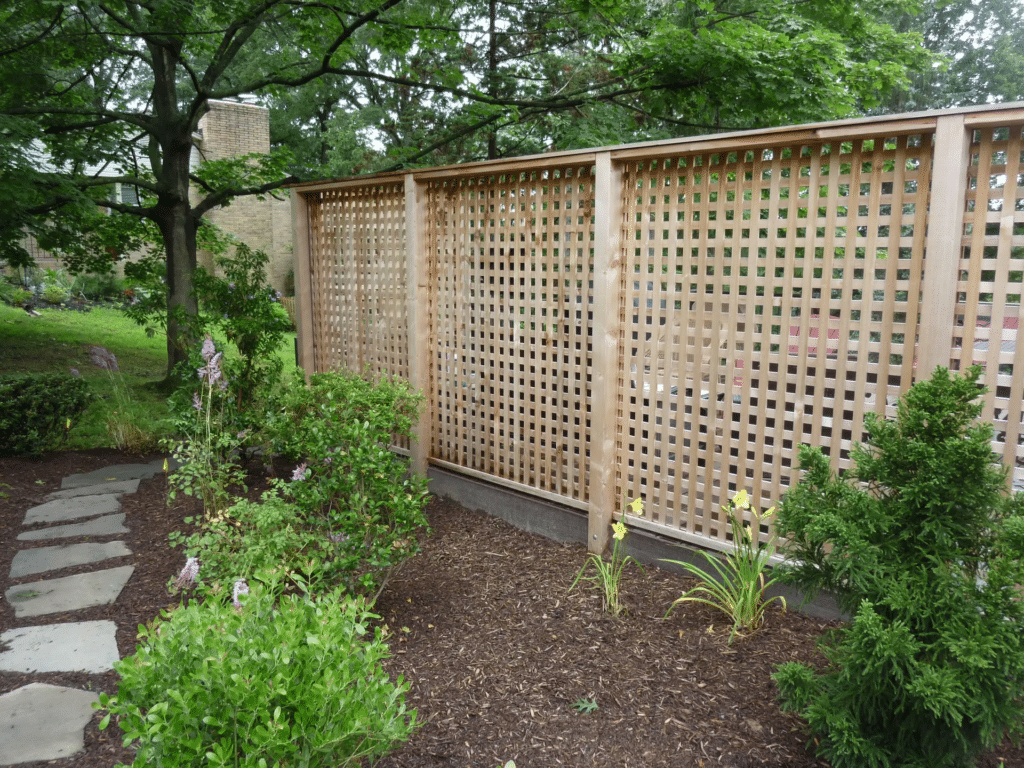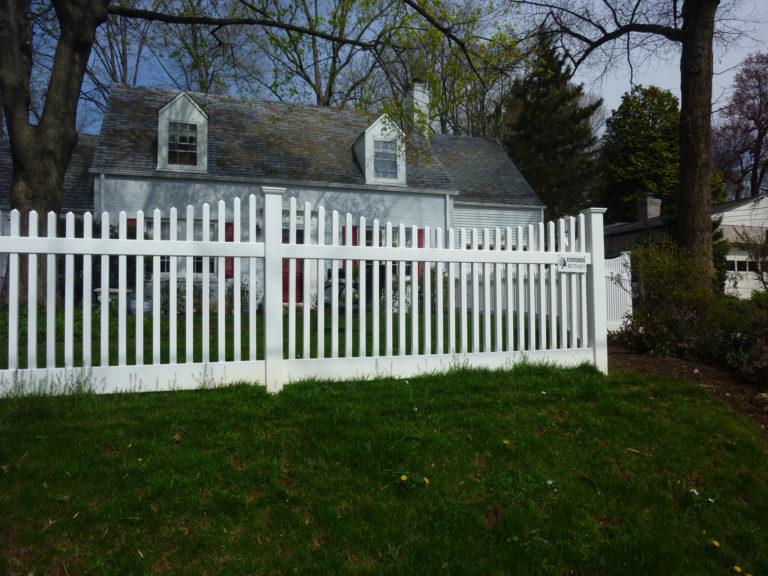
Buying a new property with a fence? Excited to lift your current space with a new fence installation? Trying to figure out if your neighbor’s fence is in your yard?
Fences are a great asset to any residential property but they’re not always as clear-cut as people imagine. Fences do not dictate a property line – property lines are pre-established and are up to homeowners to know and maintain.
If you bought a home and a fence was already built, you need to survey your property line to know for certain where it starts and ends.
If you’re looking to build a fence, you need to ensure your fence installers do a proper property line survey.
If you’re concerned about your neighbor’s fence, conduct a survey of the property lines to confirm the installation.
Read on to learn more about how to find your property line, how to maintain your property line outside of your fence, and how to install a fence without encroaching on your neighbor’s space (and whose responsibility it is to maintain that fence).
Determining Property Lines vs Fence Discrepancies
A fence does not create a property line when installed. Property lines are exact locations that are determined by a property survey, conducted by a licensed surveyor.
Pre-existing fences may have been installed either slightly inside or outside of pre-determined property lines due to errors in previous surveys, which is why any new homeowner should always have a new survey conducted when purchasing a home.
Property on the outside of a fence is still the legal responsibility of the homeowner when it comes to upkeep, maintenance, and liability. Gaps between fences should always be maintained. If two neighbors share a fence on the property line they must agree on who holds responsibility for repairs.
Always ensure you know what property specifically falls under your legal ownership so you can tend to trees, branches, repairs, holes, and more without facing liabilities.

An Overview of Maryland Fence Laws
In Maryland, fence laws are primarily governed by local ordinances and regulations. These laws vary depending on the specific county or city where the property is located.
Generally speaking, fences in Maryland must comply with zoning regulations and be constructed in a way that does not pose a hazard to public safety. Fences that are located on a property line are typically subject to shared responsibility and maintenance between the adjoining property owners.
Additionally, some counties may have specific regulations regarding the height, placement, and materials used in fence construction. HOAs may also impact these guidelines and restrictions. It is important for property owners to research and comply with these regulations to avoid any legal issues. Consulting with a professional fencing company in Maryland will help ensure all legal building needs are met, which is why DIY fence builds often end in disputes or broken property lines.
How to Ensure Your New Fence is Legal and On Your Property
- If you are a homeowner planning to build a new fence, it is important to understand your legal obligations and responsibilities regarding property lines. Here are some tips and advice:
- Check local ordinances: Before starting any construction, make sure to check the local ordinances and zoning regulations in your area regarding fence height, placement, and materials. This can prevent any legal issues down the line.
- Hire a surveyor: It is recommended to hire a licensed surveyor to accurately determine the location of your property line. This can prevent disputes with neighboring property owners and ensure that your fence is not encroaching on their property. Ask your fencing company about their licensed surveyor before approving any build.
- Communicate with neighbors: It is always a good idea to communicate with your neighbors about your fence plans. Discuss the location, height, and materials you plan to use and listen to their concerns. It may be necessary to come to an agreement or compromise if there are any issues.
- Shared responsibility: If your fence is located on a property line, it is typically subject to shared responsibility and maintenance between you and your neighbor. Make sure to establish this agreement in writing to prevent any disputes in the future.
- Obtain necessary permits: Depending on your location, you may need to obtain a building permit before constructing a fence. Make sure to obtain any necessary permits and adhere to building codes and regulations.
- Maintain the fence: It is your responsibility to maintain your fence and keep it in good condition. This includes repairing any damage and preventing it from becoming a safety hazard.

Build a New Fence in Maryland Today
Ready to take the step and build a new fence in Maryland today?
Evergreen Fence and Deck is happy to help! We are experienced and well-equipped with helping homeowners navigate property lines, maintenance agreements, and more. Protect yourself, liven up your property, and enrich your home’s value with a properly installed fence today.
FAQ
If your neighbor builds a fence on your property, you should first try to communicate with them to resolve the issue. If this does not work, you may need to hire a lawyer or mediator to help resolve the dispute. It may also be necessary to obtain a court order to remove the fence.
Fence posts can be installed either inside or outside the fence line, depending on the desired aesthetic and function of the fence. However, it is important to ensure that the fence complies with local zoning regulations and does not encroach on neighboring properties.
In most cases, the “good side” of a fence (i.e., the more aesthetically pleasing side) faces the neighbor’s property. This is because posts facing the outside can create a ladder or access for intruders – the fence is most secure when these access points are facing “in” and this also ensures the best property value viewed from the street. It is important to check local regulations and communicate with neighbors before constructing a fence to prevent any disputes.
